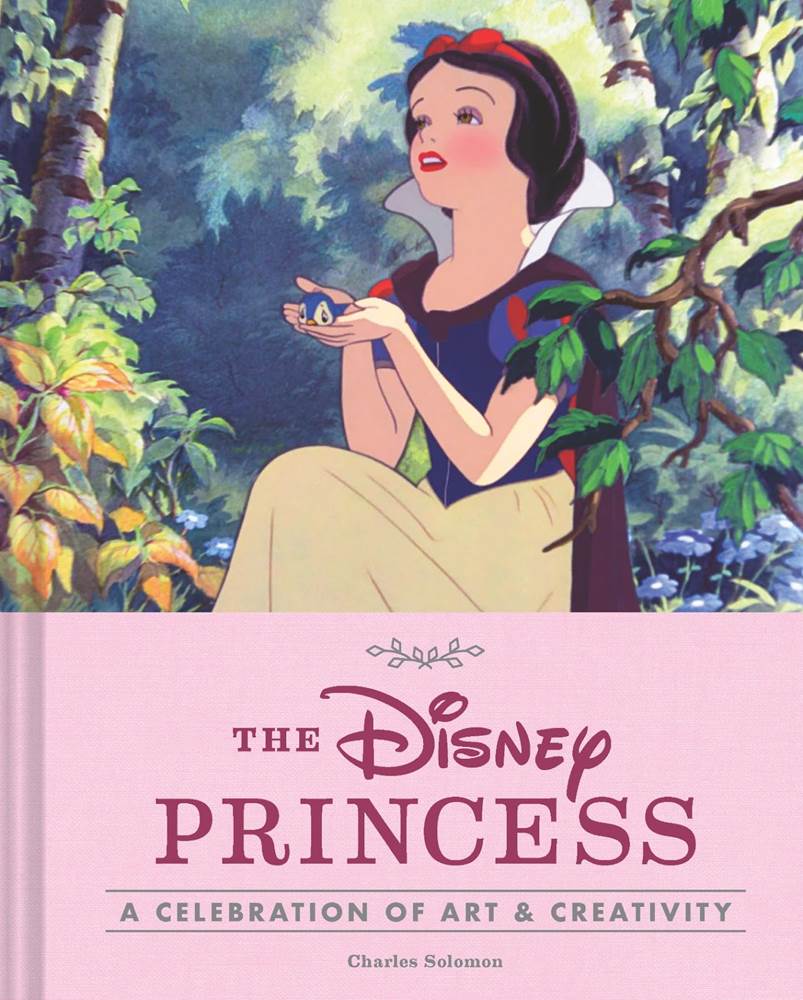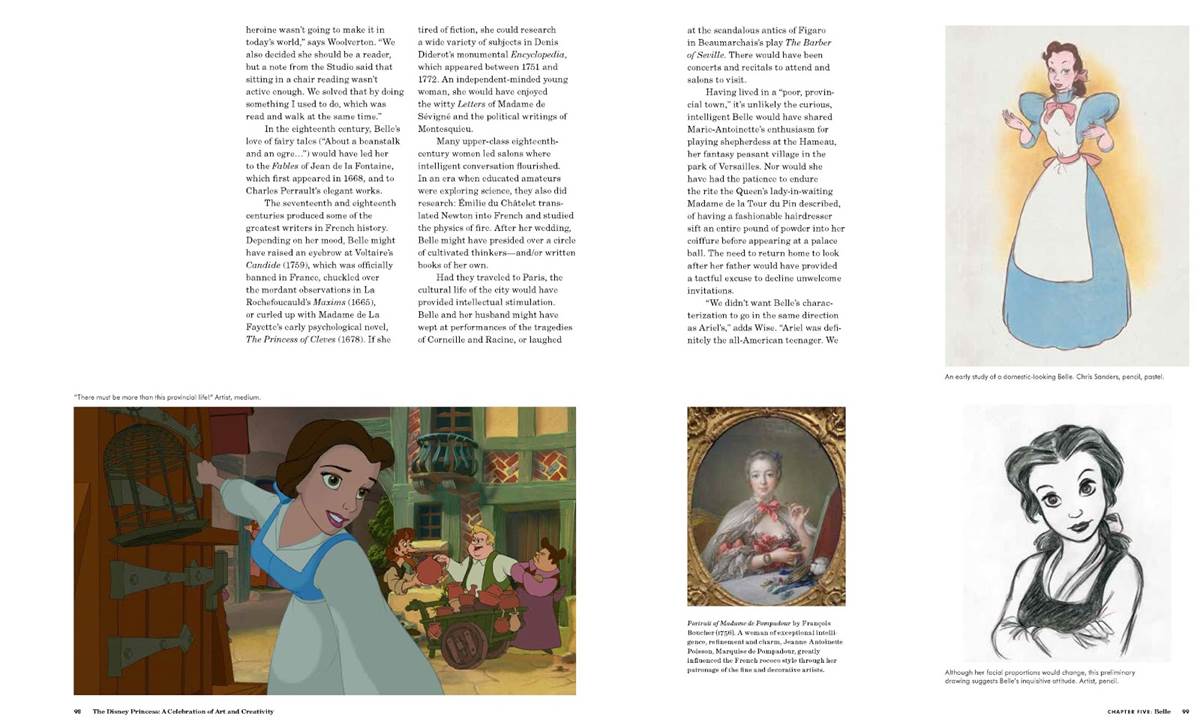The Disney Princess: Interview with Charles Solomon
Disney’s princesses are not just drawings on a page, nor are they only beautiful 2D characters pleasing to the eye. They are aspirational individuals with, as animator Eric Goldberg has said, “unique personalities and unique ways of moving” in their respective films and beyond.
The Disney Princess: A Celebration of Art & Creativity, recently published by Chronicle Books, whisks readers away in an all-new exploration of the beginnings, context, personalities, and development of some of our favorite heroines. The author’s approach is sincere, thorough and introspective as he articulates the feeling – the ‘Disney magic’ – behind some of animation’s most famous characters that we are all familiar with but perhaps have not been able to put into words.
Capturing this refreshing approach to Disney’s princesses, and finding just the right words in which to do it, is Charles Solomon.
Charles is a well-known and respected animation critic and historian, and one who shares his wealth of knowledge as a lecturer in animation at the UCLA School of Theater, Film and Television. I was delighted to chat to Charles about his work, cultural history, and the infinite potential of the art of animation.
Jessica Salafia Ward: Charles, thanks so much for joining us at Laughing Place.
Charles Solomon: Thank you for inviting me.
JSW: You are an esteemed journalist, as well a renowned author and lecturer in the field of animation. Was this always your projected career path? How did you arrive at where you now find yourself?
CS: Thank you for all the kind words. I don’t think there was a job description for “animation critic and historian” when I was growing up. But I always wrote and I was always interested in animation, so the two somehow came together.
JSW: Your reputation also precedes you when it comes to Disney history and animation. Have you always been a Disney fan?
CS: Some of my earliest memories—going back to when I was about four—are of watching animation on TV. Disney, Warner Bros., Fleischers. I never stopped.
JSW: The Disney Princess is the long-awaited, princess-focused book Disney fans will be delighted to get their hands on. How would you describe this book?
CS: For readers who like the Disney films but don’t know much about their creation, it can serve as an introduction. I hope more serious fans will discover new information about the creation of their favorite princesses.
JSW: You do a great job condensing the history and context of each princess while thoughtfully suggesting why they remain such powerhouses today. (I very much enjoyed your input on what each princess would have read or what activities she would have engaged in beyond what is portrayed in the films.) Tell us a bit about your brainstorming process for this book. How did you choose what to include and what not to include?
CS: I have a BA and an MA in European cultural history from UCLA, so I started with some knowledge of the worlds the Disney artists were depicting and caricaturing. For example, in an 18th century history class, I read the memoirs of one of Marie Antoinette’s ladies-in-waiting; that’s where I learned about a hairdresser sifting an entire pound of powder into an elaborate coiffure. Can you imagine enduring that process?
JSW: Disney continues to evolve and diversify its princesses and female heroines. Do you think it is important for Disney’s princesses to adapt in this way? Similarly, do you think it is important for Disney fans to understand the context in which Disney’s classic princesses were born?
CS: Every work of art—a painting, a novel, an animated film, an opera—reflects the society in which it was created. Snow White was made in 1937 and reflects the tastes and beliefs of that era. Moana and Tiana reflect our ideas in the 2000’s. Who knows what an animated princess will be like in 2050? We continue to enjoy older works of art—Mozart’s operas, Rodin’s sculptures, Giotto’s paintings—because of their excellence and their influence on later works. Similarly, we enjoy the adventures of the earlier princesses because the films are beautiful and important. But we look at them with different eyes than our parents and grandparents did. To appreciate modern animation fully, you need some knowledge of its past and how it continues to develop. An informed audience benefits animators.
JSW: Who is your favorite Disney princess and why?
CS: I think everyone has a Disney feature that’s special to them—the story resonates or the art style appeals to them or they saw it at a key moment in their childhood. Mine is Sleeping Beauty, so I guess it would be Aurora. Has anyone ever matched Marc Davis’ animation of her? Of the more recent films, it would be Belle. I think the lesson she learns—that a partner who conceals gentle heart within a baleful exterior is more desirable than a cruel but attractive one--is especially valuable today. And I’m comfortable with people who love to read.
JSW: You have authored a number of books, including other Disney animation books. How are you feeling about sending The Disney Princess out into the world? How do these feelings differ from previous books you have published, if at all?
CS: I feel guilty enough about having a favorite cat, don’t ask me to pick a favorite book!
JSW: How did your process for writing this book differ, if at all, from previous books and projects you have undertaken?
CS: Usually, I’ve focused on a specific film or a certain portion of animation history. This time, I was dealing with specific characters.
JSW: What are some of the greatest challenges you face in “recording” animation history?
CS: I was fortunate to begin doing interviews and research when many artists from the earlier films were still alive. No one who worked during the silent era is left, and very few people who worked closely with Walt are still with us. Yet there are so many questions I’d like to ask.
JSW: What are some of the greatest lessons you have learned throughout your career?
CS: The infinite potential of the art of animation. Years ago, I hosted a panel about Snow White with many of the artists who had worked on it. When someone asked Art Babbitt what was the greatest piece of animation ever done, he thrust out his chin and said, “It hasn’t been done yet. Everything we’ve done has yet to scratch the surface of what this art form is capable of!” That thought remains with me, many years later.
JSW: What do you find to be most rewarding about your work?
CS: I get to do what I think I do best—write—about an art form I love. I get to talk to very interesting people and I’ve made some wonderful friends.
JSW: What advice would you give others wanting to be published on Disney history?
CS: Do your homework. Try doing some simple animation and see how it increases your respect for the great Disney animators. Learn about anatomy and movement to understand how animated motions are created. Watch films from other artists and other countries to see how they handle certain themes: Artists in Japan and Europe are doing exciting animated features.
JSW: What do you ultimately hope readers get out of The Disney Princess?
CS: I hope they learn a few things they might not have known about characters they love and gain a little more respect for the artists who created them.
JSW: Assuming you can disclose them, what other Charles Solomon projects can we look forward to in the near future?
CS: I can’t name a couple yet. But Dickens has a stroke while writing “The Mystery of Edwin Drood,” the pen in his hand leaving a trail of ink down the page. How else would a writer want to go?
The Disney Princess: A Celebration of Art & Creativity is now available to purchase from most booksellers.





